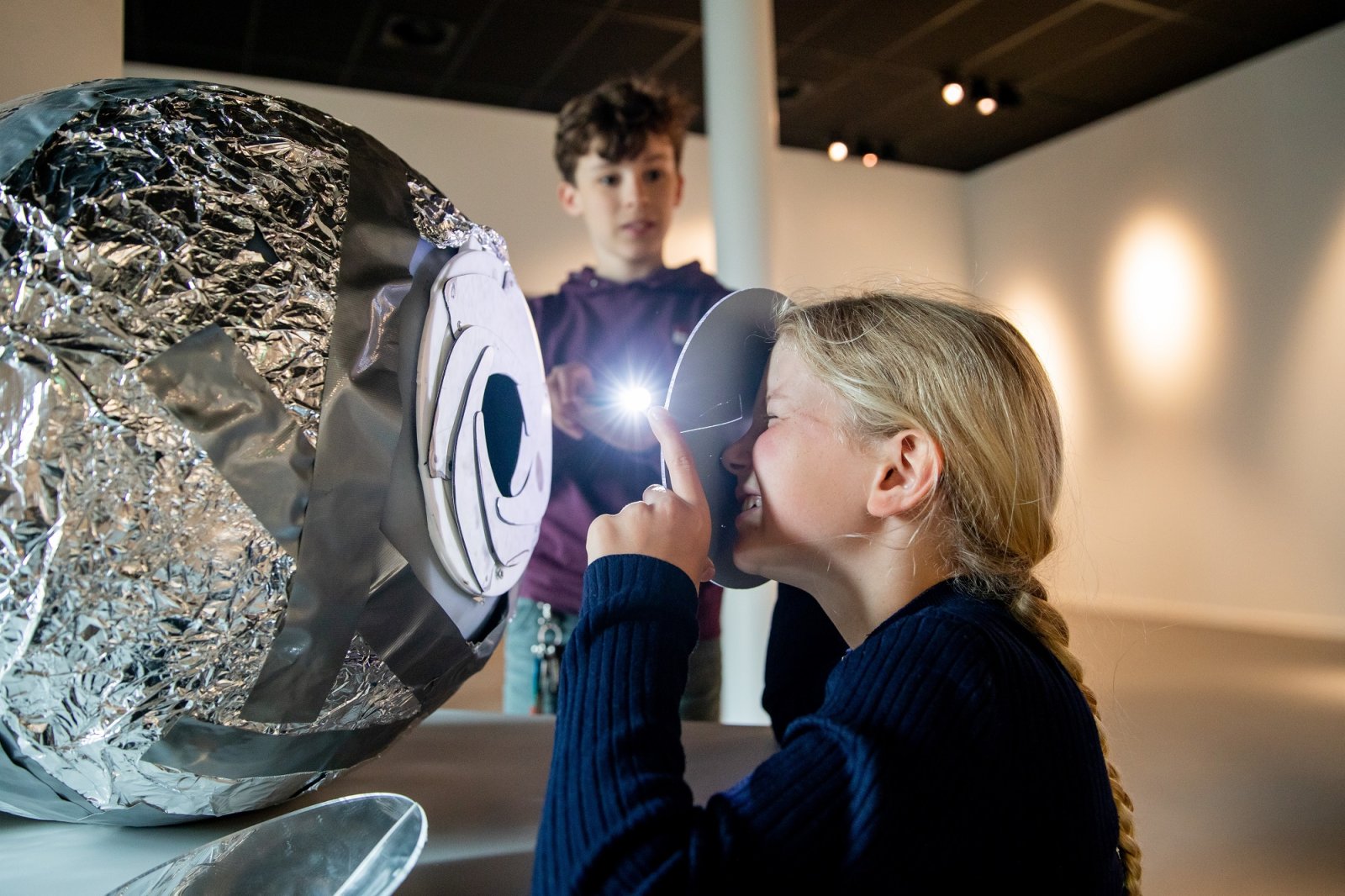Visitors get to become researchers at the new University Museum
Call for collaborations
Utrecht University researchers can also contribute to UMU's programming. For example, they can give a family lecture, invite visitors to participate in a citizen science project or collaborate with artists. The museum welcomes any ideas that can help bridge the gap between research and the general public. UMU has the necessary expertise to connect with a broad audience and is especially focused on families. The museum's extensive collection is also available for research purposes. If you are interested in collaborating with the new UMU, please get in touch with Suzanne van der Wateren, s.c.vanderwateren@uu.nl
University Museum Utrecht (UMU) is currently being remodelled and renovated. The Netherlands' very first research museum will open its doors in September 2023. Five new galleries offer families the opportunity to actively experience scientific research at Utrecht University and explore the work of its current and former researchers. Hester Ketel and Suzanne van der Wateren are working on the renovation effort with a large team and share a glimpse behind the scenes.
The research process
The museum has a varied collection of over 200,000 objects, from preserved animals and skeletons to fossils and natural science instruments. A selection will be on display soon at the newly renovated museum. While other science museums tend to focus on scientific phenomena, UMU is mainly centred on the research process. As Van der Wateren explains: "We're set to become a research museum where visitors get a behind-the-scenes look at the research process. We aim to promote scientific literacy and show visitors that academic research is an ongoing process."
Suzanne van der Wateren is head of University Museum Utrecht's Visitor and Presentation Department.
"Visitors experience the research process first-hand by taking on the role of researcher," Hester Ketel explains. "Each exhibition offers visitors the opportunity to actively engage in the process. From historical research to physics, from psychology to geology. For example, visitors get to design an eye mirror in the 'Uitdokteren' (figuring things out) gallery. Before starting on the design process, visitors examine each other's eyes and pupillary reflex. For example, does the pupil change when a light comes on? Or perhaps it changes when the room goes dark? This helps connect the topic to visitors' lived experiences. Visitors can experiences these interactions, as we refer to them, in each of the museum's galleries. All our activities are multilayered. Everyone can get started right away, even if they don't have any prior knowledge. There's also a more in-depth layer for those who really want to explore the subject matter."
Hester Ketel is education coordinator at University Museum Utrecht.
Looking for that spark
The museum also showcases present-day research and research findings. Museum staff work closely with 20 Utrecht University researchers. They translate concrete research projects into family-friendly exhibitions, interactive activities or videos with the help of an interaction designer. Ketel: "Some researchers already have their own ideas and know exactly how to appeal to a broader audience, while others need a bit more guidance. We tend to start by asking, 'Which aspects of your research are you most excited about?' Once you see that spark in their eyes, you know you're probably onto something.”
An inquisitive mindset
Ketel hopes children visiting the museum will get to experience the research process first-hand and learn that you can research anything. "It would be great if they're suddenly a lot more interested in the world around them on the way back home." Van der Wateren adds, "I hope our visitors discover that academic research also relates to them and gain a better understanding of the research process."
The search for answers
Carlijn van den Boomen studies children's ability to recognise emotions in adults and other children. "Kids will soon be able to do their own small-scale version of my research project at UMU. They'll be studying emotions with the help of a computer and all sorts of tests. I think it's important to share my research with children, because I want to teach them how the process works and show them it's all about asking questions first and then looking for an answer. Kids are naturally curious and ask a lot of questions. I want to stimulate them to keep asking questions, but I also want to teach them how to look for answers themselves."
Dr Carlijn van den Boomen is assistant professor and researcher at the Faculty of Social and Behavioural Sciences.
A large group of children previously took part in the study. As we discovered at the time, they do not have any difficulty identifying strong emotions in other children and adults. Children are actually most likely to recognise mild sadness or joy in adult faces.
The YOUth study also included a test involving facial expressions and emotions. Among other applications, the outcomes could be used to develop training programmes that teach children to recognise emotions more accurately.
Text: Eline Dondorp


